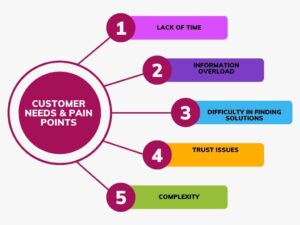In content creation, understanding your audience is crucial for tailoring your message and optimizing engagement. This involves considering various demographic factors such as age, gender, location, and interests. Let’s break down each of these factors:
Who Are They? Demographics in Content Creation
1. Age
- Relevance: Different age groups have varying preferences, challenges, and levels of understanding about certain topics.
- Considerations:
- Children (0-12 years): Content should be entertaining, educational, and simple. Visuals and interactive elements are important.
- Teens (13-19 years): Content should be trendy, relatable, and engaging. Social media trends and peer influence play significant roles.
- Young Adults (20-35 years): Content should be dynamic, value-driven, and informative. This group values authenticity and often engages with issues like career development, lifestyle, and personal growth.
- Middle-Aged Adults (36-55 years): Content should be practical, solution-oriented, and in-depth. Common interests include family, finance, health, and self-improvement.
- Seniors (56+ years): Content should be clear, respectful, and considerate of accessibility needs. Topics often revolve around health, retirement, leisure activities, and technology use.
2. Gender
- Relevance: Understanding gender demographics helps in crafting content that resonates with the audience’s unique experiences and interests.
- Considerations:
- Male: Content may include technology, sports, finance, and hobbies traditionally favored by men.
- Female: Content may lean towards fashion, beauty, wellness, family, and career topics traditionally favored by women.
- Non-Binary/Other: Inclusive language and representation matter. Content should avoid gender stereotypes and aim for inclusiveness and diversity.
3. Location
- Relevance: Geographic location influences cultural norms, language, availability of services/products, and local interests.
- Considerations:
- Urban vs. Rural: Urban audiences might be more interested in fast-paced, trendy content, while rural audiences may prefer content related to community and nature.
- Country/Region: Cultural context is key. Content should respect and reflect local traditions, holidays, and values. Localization of language and examples is essential.
- Climate: Content may also vary based on the climate. For instance, outdoor activities will differ between tropical and temperate regions.
4. Interests
- Relevance: Audience interests dictate the relevance and appeal of your content.
- Considerations:
- Hobbies: Understanding common hobbies (e.g., gaming, gardening, fitness) helps in creating engaging and relevant content.
- Media Consumption Habits: Knowing whether your audience prefers blogs, videos, podcasts, or social media influences content format and platform choice.
- Values and Beliefs: Aligning content with the audience’s values (e.g., sustainability, ethical consumerism) fosters connection and loyalty.
- Current Trends: Keeping an eye on what is trending within specific interest groups can help in creating timely and popular content.
Putting It Together
When creating content, a comprehensive demographic profile might look like this:
Example Demographic Profile:
- Age: 25-34 years
- Gender: Female
- Location: Urban areas in North America
- Interests: Health and wellness, eco-friendly lifestyle, career development, social media trends
Content Strategy Based on Profile:
- Blog Topics: “Top 10 Eco-Friendly Beauty Products of 2023,” “How to Balance Work and Wellness in a Busy City.”
- Social Media: Instagram and Pinterest-focused posts with appealing visuals and practical, actionable tips.
- Video Content: Short YouTube tutorials or vlogs on sustainable living hacks and workplace wellness.
- Engagement Tactics: Interactive polls, Q&A sessions on Instagram Live, and user-generated content campaigns.
By understanding and segmenting your audience based on detailed demographic considerations, you can create targeted and effective content that resonates, engages, and converts. If you need more specific guidance or examples tailored to your content goals, feel free to ask!




